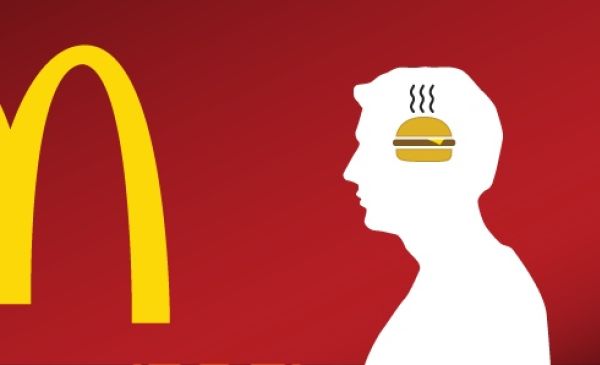This thought piece is about the art of branding. My assumptions are that you don’t have infinite resources and that you do have a great product. If you do have infinite resource and don’t have a great product, there’s still hope, but you don’t need to read this entry any further.
Seize The High Ground. Establish your brand on positive attributes like “making meaning,” “doing good,” “changing the world,” and “making people happy”–not doing in your competition. Think about it: when is the last time you bought a product to hurt a company’s competition? (Other than maybe Macintosh users.) That’s not why you spend your dollars. If you want to beat your competition, establish an uplifting brand, but don’t try to establish a brand based on your silly desire to beat your competition.
Create One Message. It’s hard enough to create and communicate one branding message; however, many companies try to establish more than one because they are afraid of being niched and want the “entire” market. “Our computer is for Fortune 500 companies. And, oh yes, it’s also for consumers to use a home.” Face it, Volvo can’t equal safety and sexiness, and Toyota can’t equal economical and luxriousness (sic). You can pick one message, see if it works, and then try another. But you can’t try several at once.
Speak English. Not necessarily, English, but speak in non-jargonese. If your positioning statement uses any acronyms, the odds are that (a) most people won’t understand your branding, and (b) your branding won’t last very long. For example, “best JPEG decoder” presumes that people understand what “JPEG” and “decoder” mean. And ten years from now, who knows if JPEG matters anymore. Not to be an ageist, but a good test is to ask your parents if they understand what your positioning means–assuming your parents aren’t computer science professors.
Apply The Opposite Test. How many times have you read a product description like this? “Our software is scalable, secure, easy-to-use, and fast?” Companies use these adjectives as if no other company claims its product is scalable, secure, easy-to-use, and fast. See if your competition uses the antonyms of the adjectives that you use to describe your product. If it doesn’t, your description is useless. For example, I’ve never seen a company say that its product was limited, full of leaks, hard-to-use, and slow.
Cascade The Message. Let’s say that you craft the perfect branding message. As the Japanese say, “Mazel tov.” Now cascade your message up and down your organization. The marketing department of many companies assume that once they’re put out the press release or run the ad, the entire world understands the message. It’s unlikely that even the entire company does. Start with your board of directors and work down to Trixie and Biff at the front desk and make sure every employee understands the branding.
Focus On PR, Not Advertising. Many companies waste away millions of dollars trying to establish brands with advertising. When it comes to branding, too much money is worse than too little because when you have a lot of money, you spend a lot of money on stupid things like Super Bowl commercials. Brands are built on what people are saying about you, not what you’re saying about yourself. People say good things about you when (a) you have a great product and (b) you get people to spread the word about it.
Strive For Humanness. Great brands achieve a high level of humaness. They speak to you as an individual, not as part of a market. It’s “my iPod.” “My Macintosh.” “My Harley Davidson.” “My bottle of Coke.” By contrast, you’d never think, “My Windows XP,” or “My Microsoft Office,” so I wouldn’t label Microsoft as a great brand although, obviously, it is a great financial success. Ideally, you’d achieve both.
Flow With The Go. As much as a I love marketing, at the end of the day, customers ultimately determine what your brand means. To a great degree, you take your best shot, and then you see what sticks. Or, more accurately, you see what customers make stick for you. For decades Apple has tried to make the Macintosh brand stand for power. For decades consumers believe the Macintosh brand stands for easy to use. Ultimately, you flow with what’s going, and you be thankful that it’s flowing at all.
The Blake Project Can Help: The Brand Positioning Workshop
Branding Strategy Insider is a service of The Blake Project: A strategic brand consultancy specializing in Brand Research, Brand Strategy, Brand Licensing and Brand Education





2 comments
engtech
January 16, 2007 at 11:51 am
The parent test is a huge litmus.
That’s why I really enjoyed dead20.com when it used to be up.
Vince Runza
January 18, 2007 at 2:57 pm
My brand is so new, there aren’t enough consumers to help me identify where the flow is! If you go by a handful of sales with little feedback, I’d say I have international appeal (with a couple of Italian ladies and an Aussie eBook seller) and Midwest resonance (one guy in Tulsa, OK).
I’m especially enamored of the idea of speaking “non-jargonese”, but fall prey to lapsing into printing-and-layout-speak when it comes to my Classic Literature publications. Need more data to see if I’m resonating with those who love a finely crafted book, even if it is a PDF.
Comments are closed.